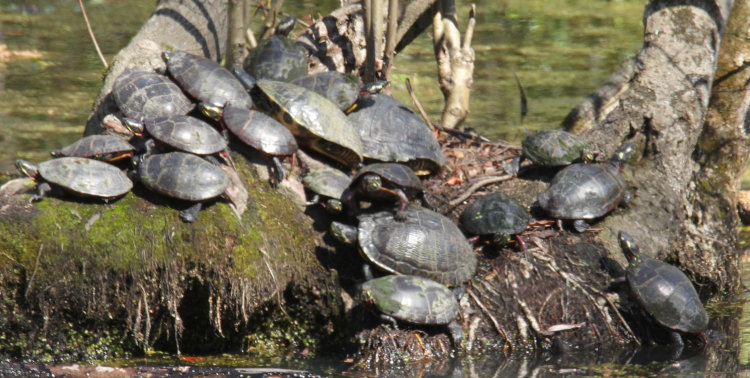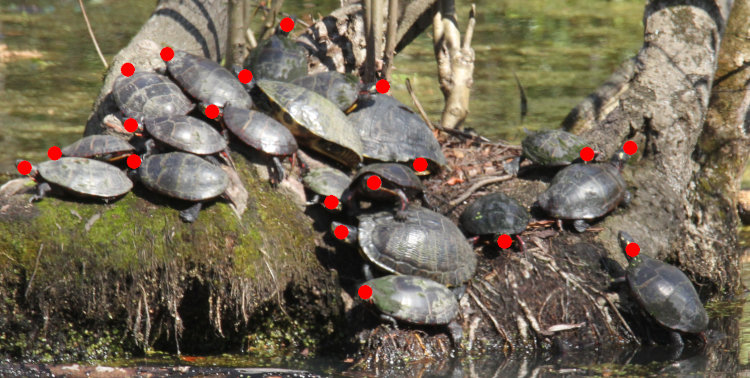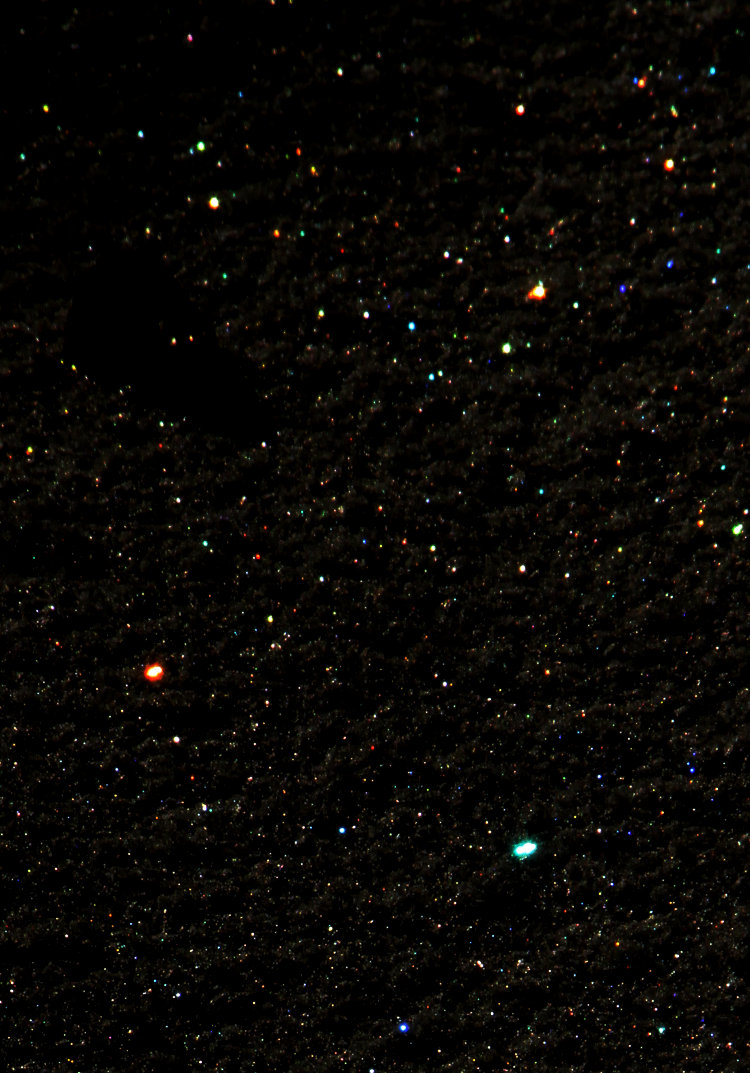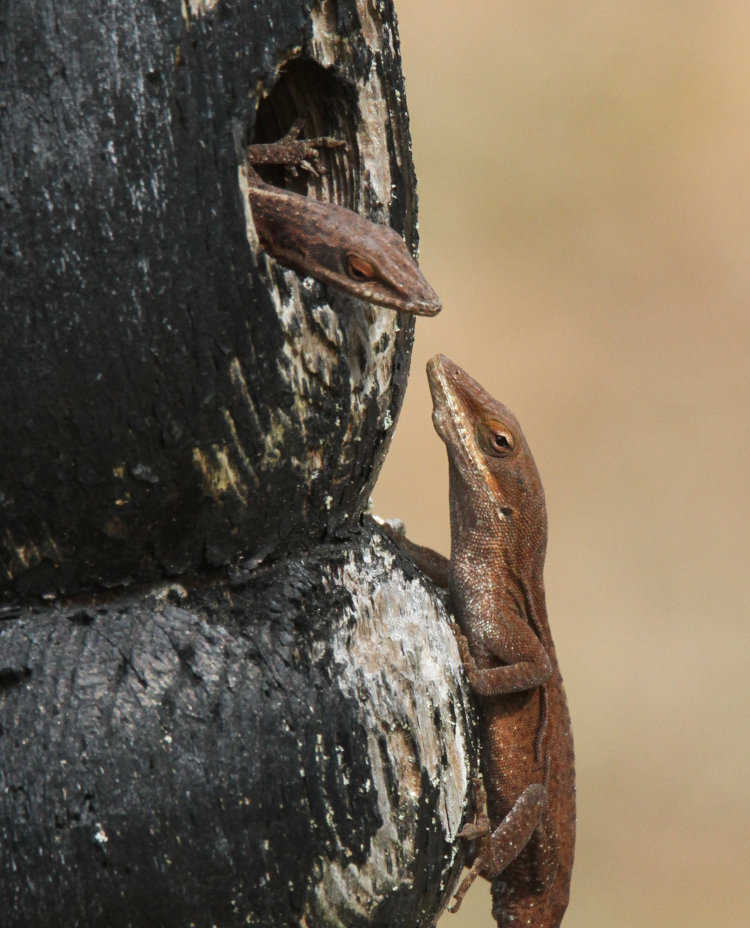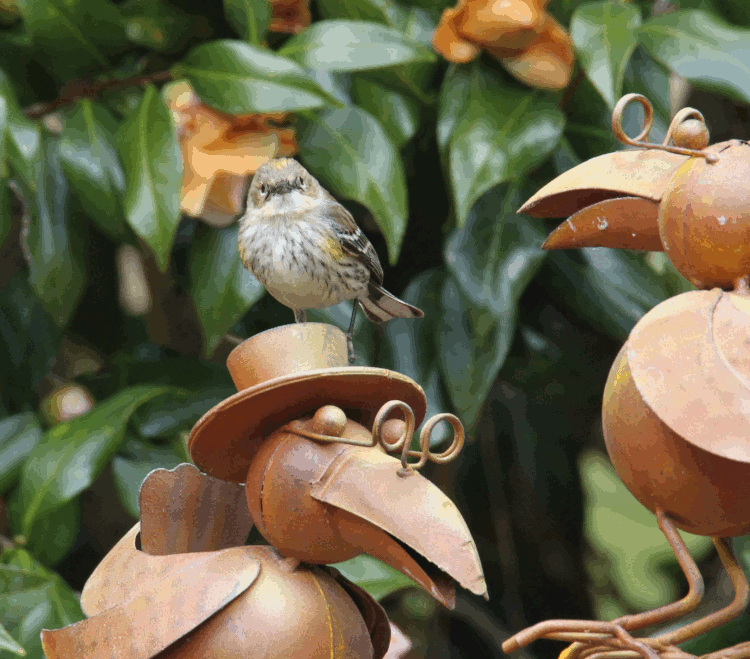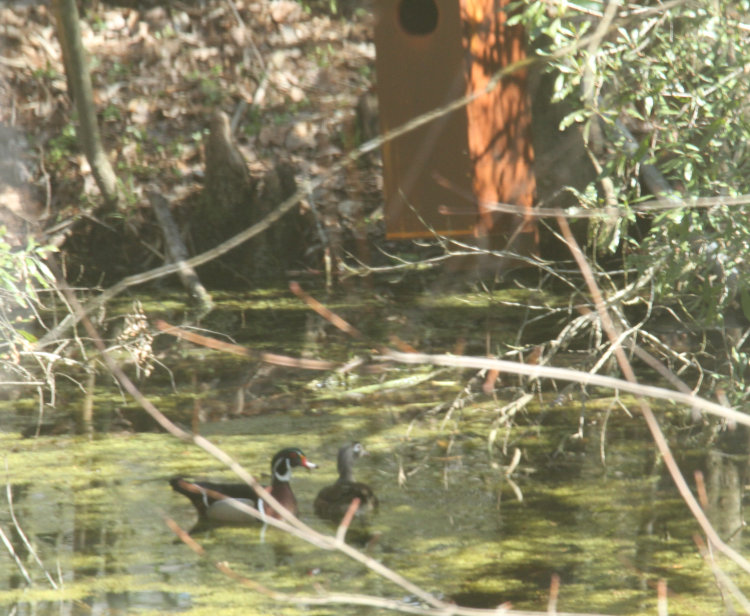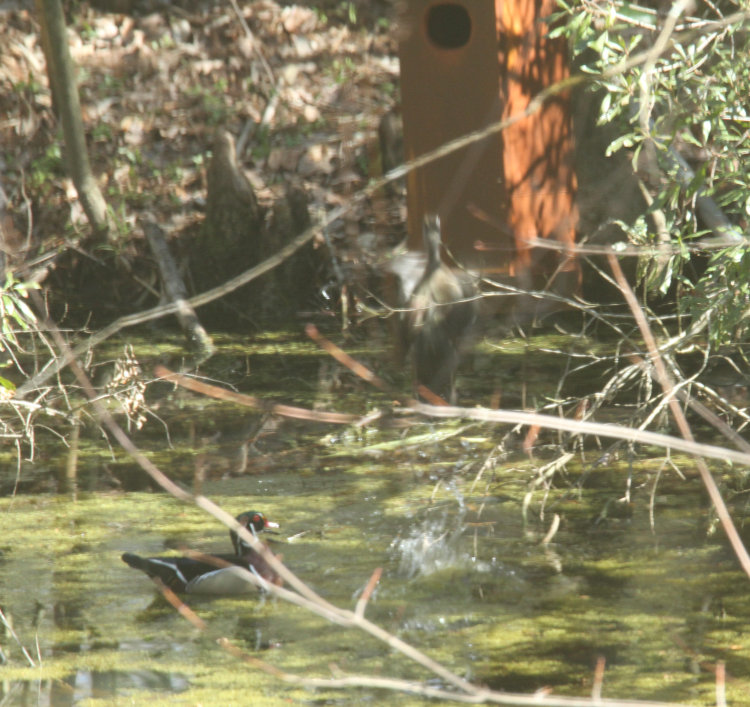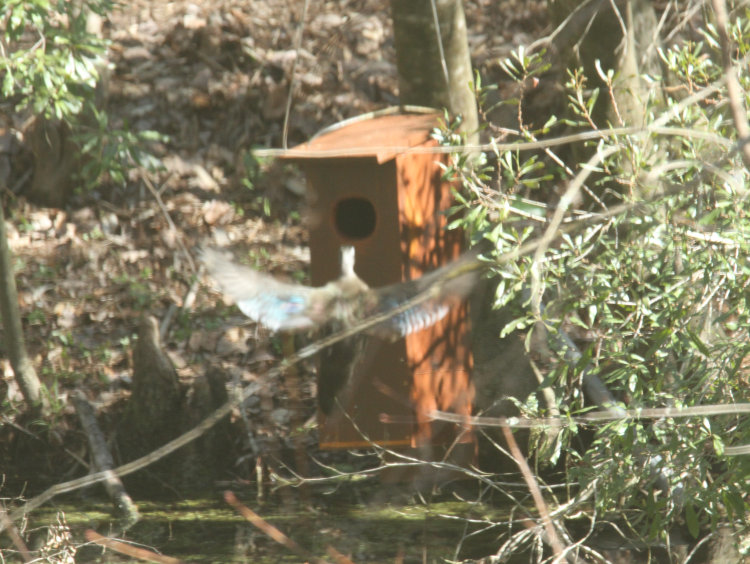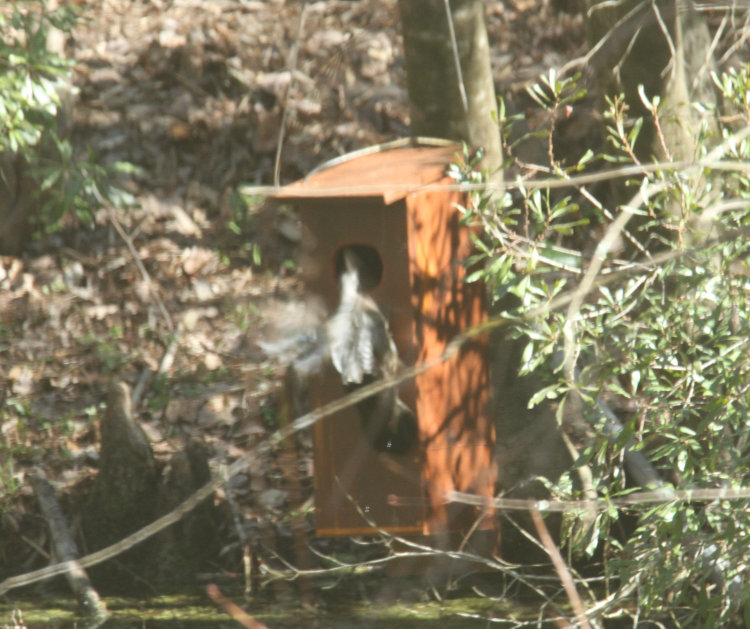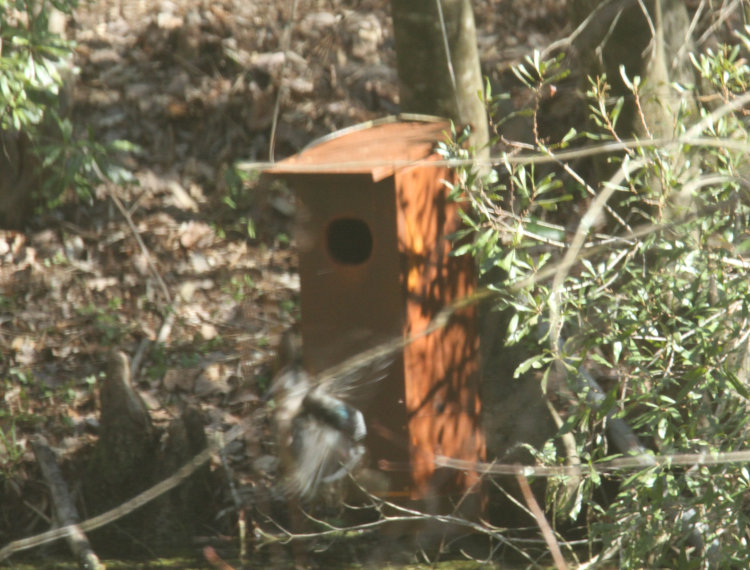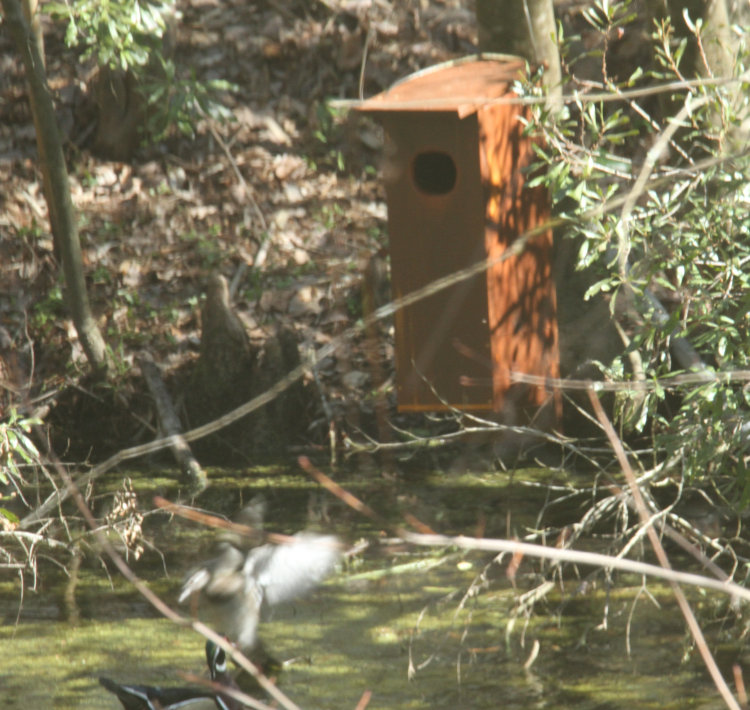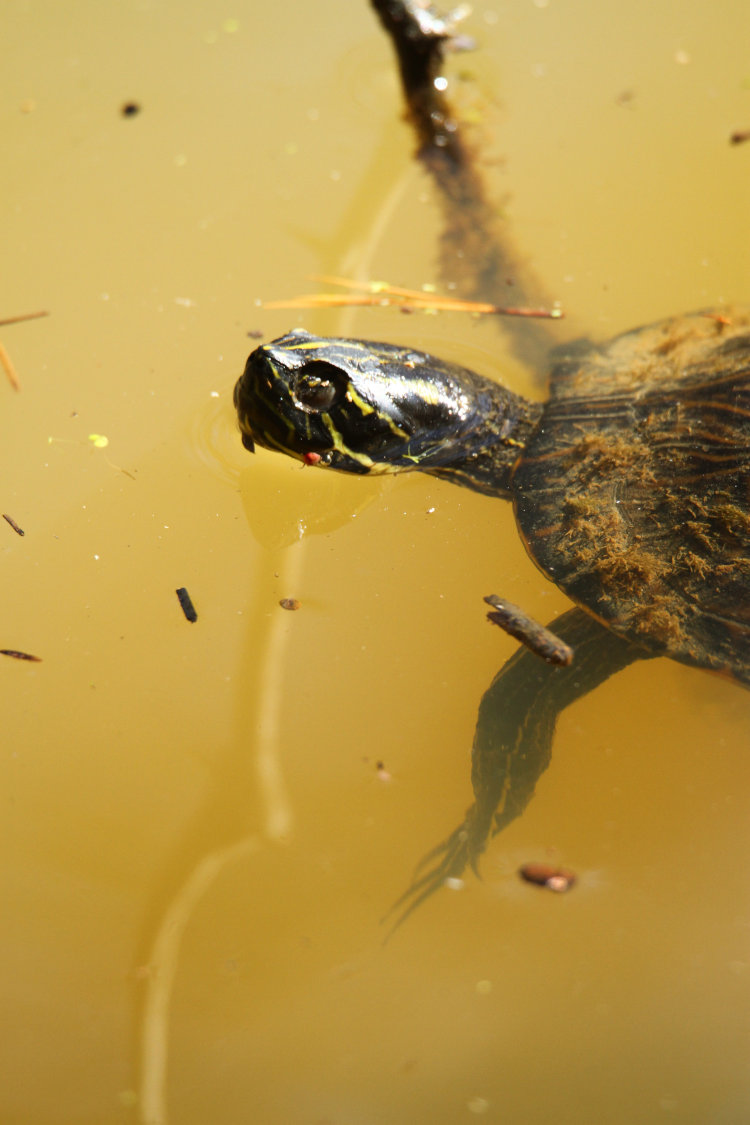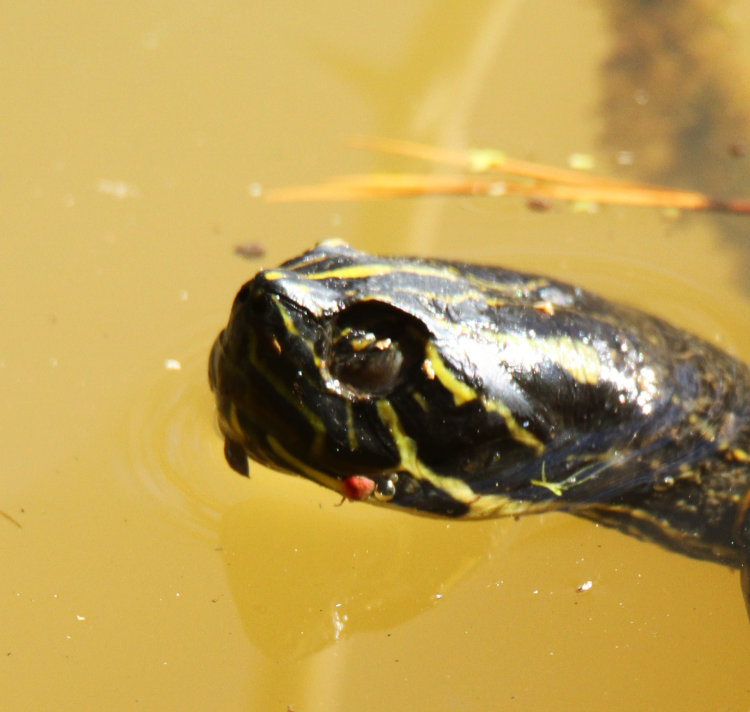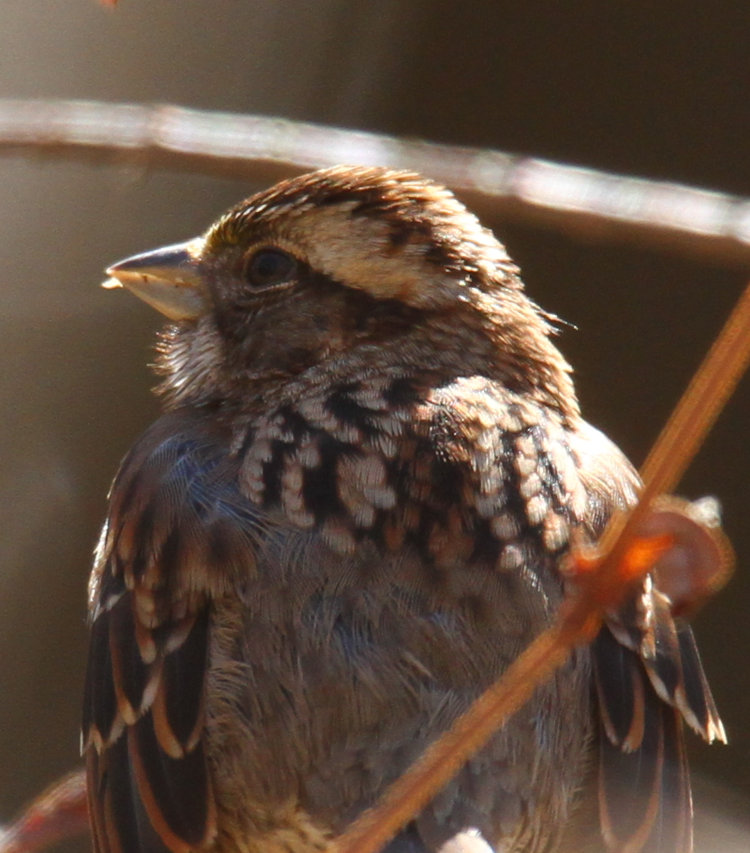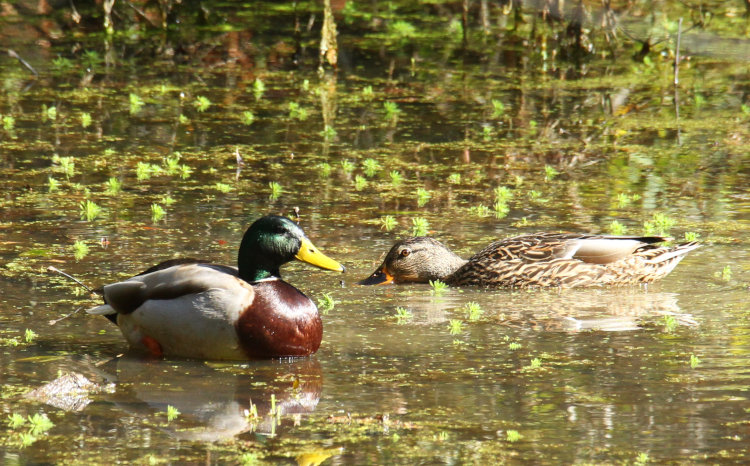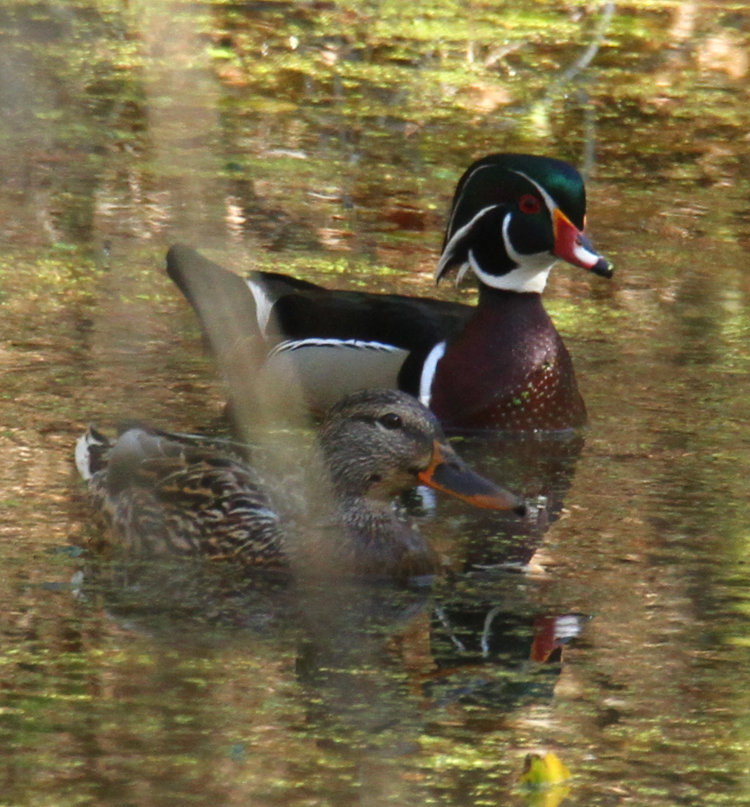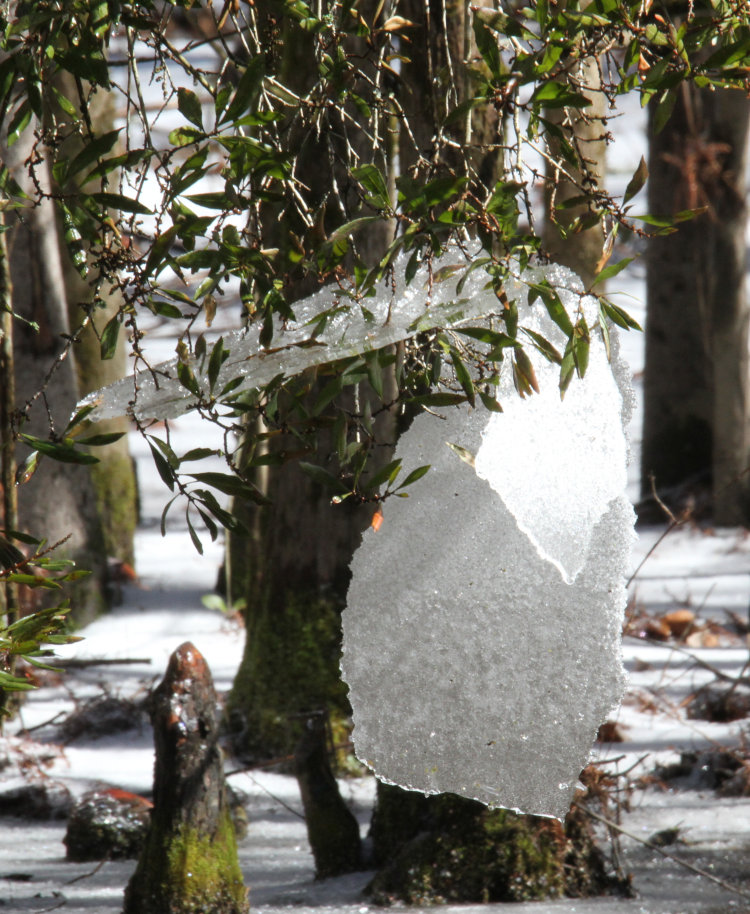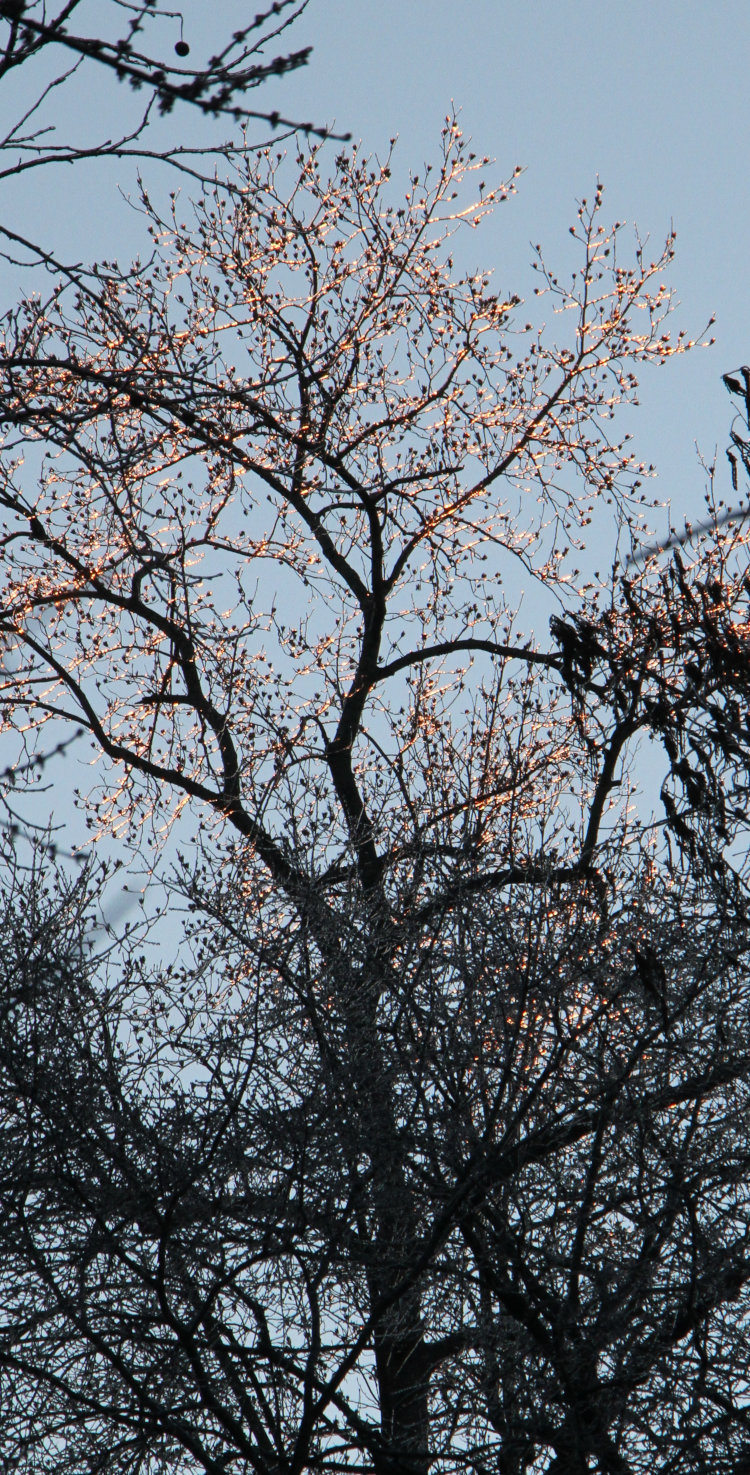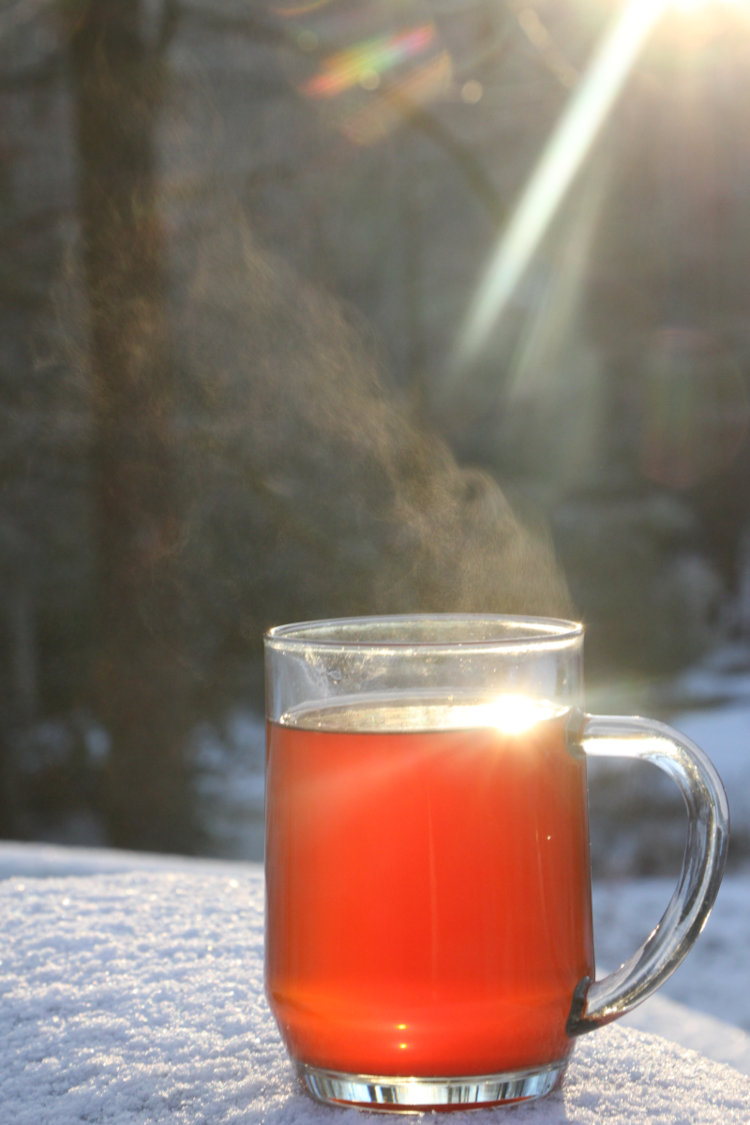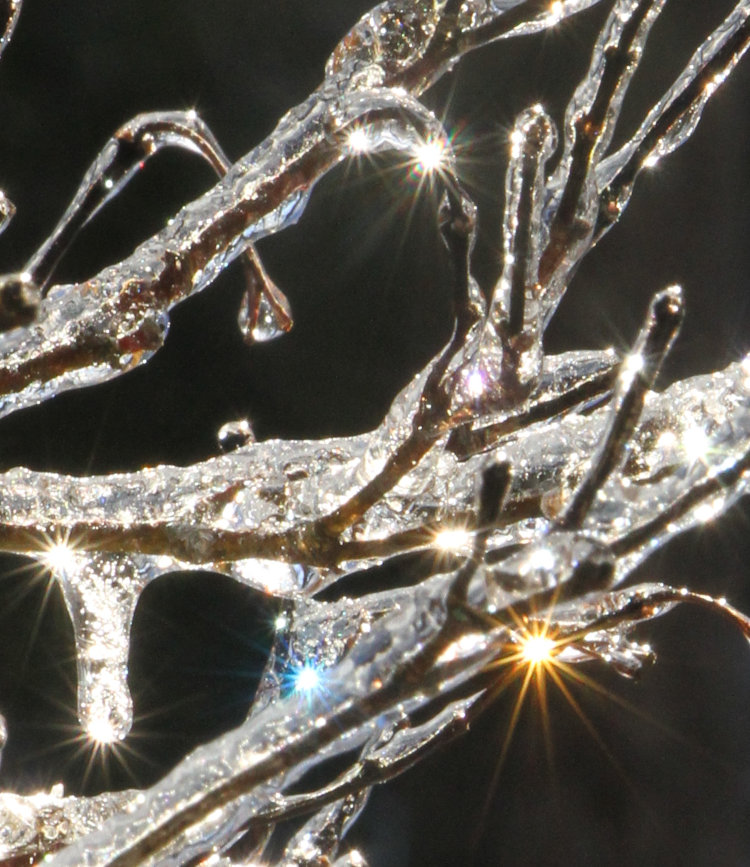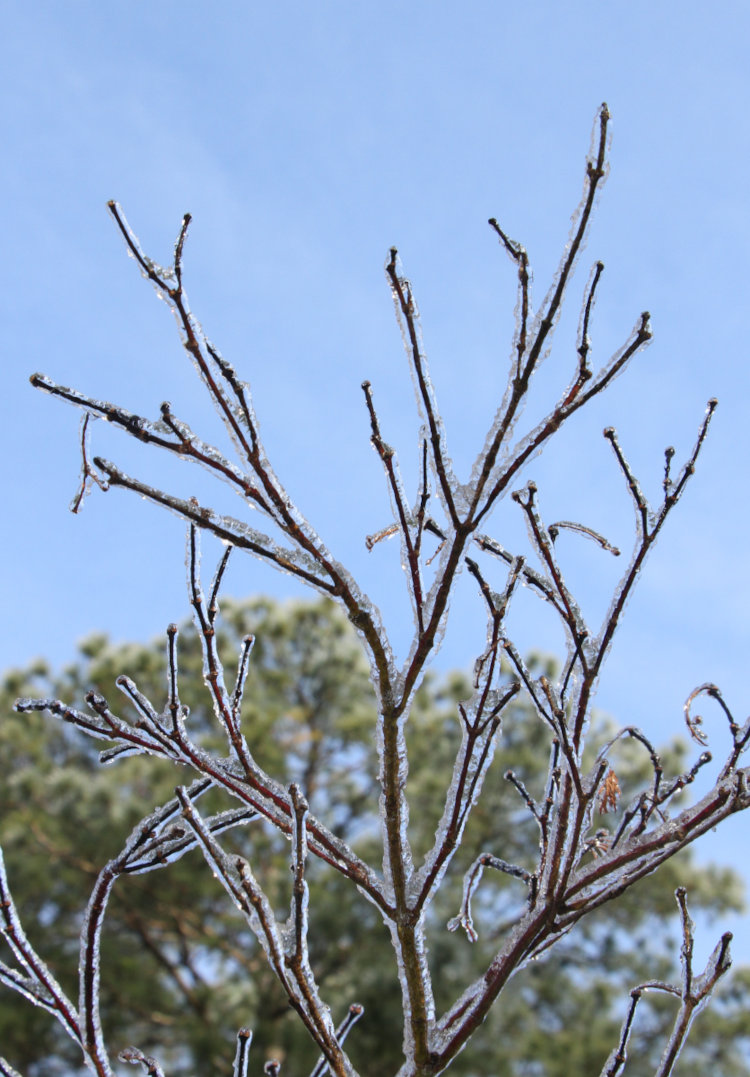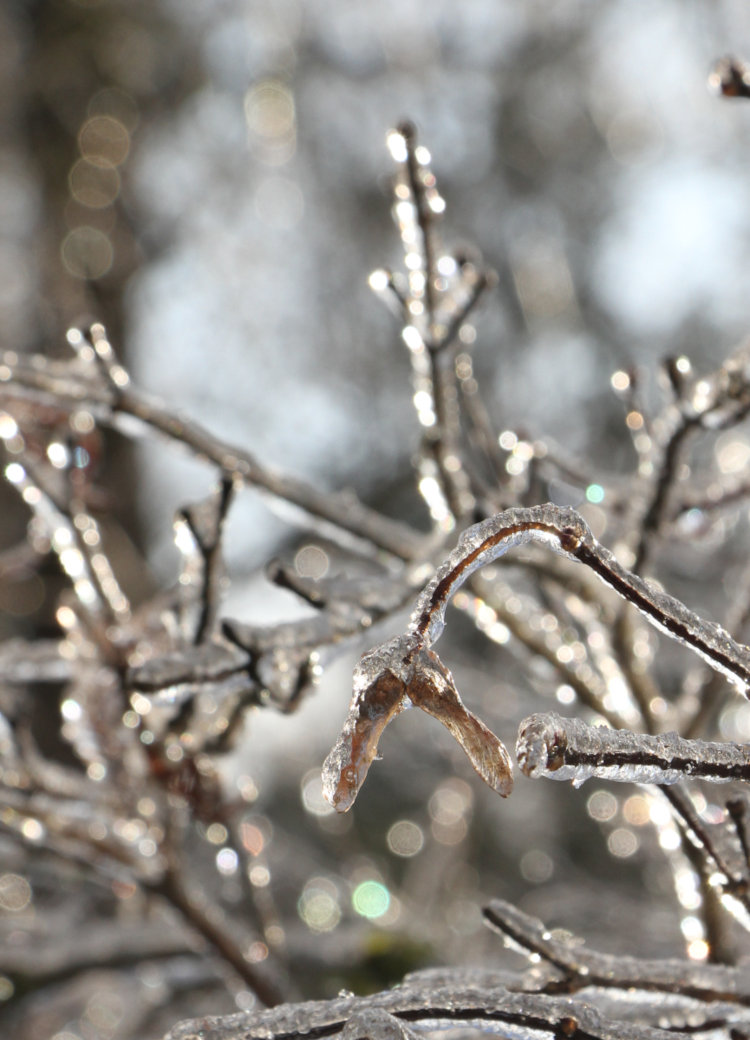I’m talking about me in the title, since I finally got around to a task which I’ve had planned – well, mostly – for weeks. I have to credit this to the holiday, celebrated the 3rd Tuesday in February after an election year where you realize far too many of your fellow citizens are utter fucking morons, which is If It Goes Another Day You’re A Worthless Excuse For An Amateur Naturalist, or IIGADYAWEFAAN for short (I shouldn’t have to tell you how to pronounce that.) Prompted by this holiday, which seems inexplicably targeted towards me somehow, I dragged The Girlfriend out to the edge of the pond and finally got the wood duck nest box hung.
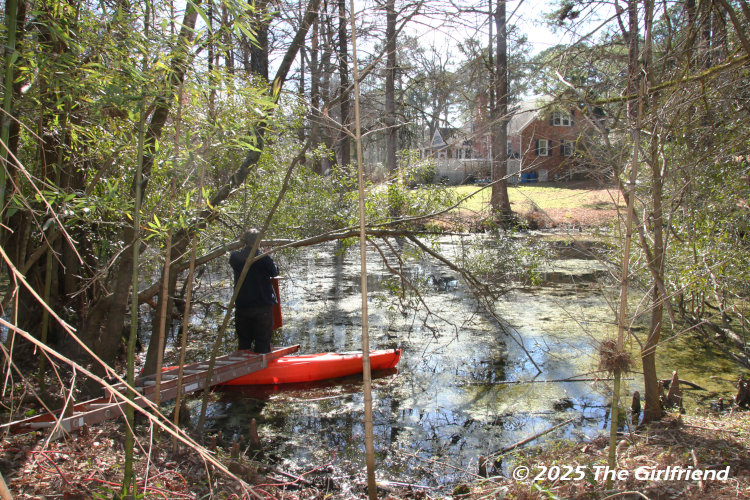
Now, a word in my defense: I had actually tackled this better than a week ago, but that attempt didn’t work out, and I had to consider a new approach. Said attempt involved a stout pipe with a flange at the top, which had originally sported a bird feeder, but I figured that it would support the nest box on top just ducky fine. I wanted it out over water, but there was a spot I could reach it from shore and hammer it in; with the third swing of the sledgehammer, however, the flange shattered and departed in two different directions, and after a couple more swings, I could see the threaded end of the pipe mushrooming under the impacts. That meant that I couldn’t replace the flange on top, and would have to attach the box to the side of the pole instead, yet the pole was already sinking too far into the mud – the box would barely be off the water. This caused me to regroup.
It does not help that we already know the bottom is quite soft and downright treacherous, meaning a pole would have to go very deep but also that standing in the water would probably place me too low to actually hammer the damn thing in. I opted to hang it from a tree instead – not ideal, but the wood ducks are active in the pond and time’s a-wastin’; they’re going to want to nest soon.
My first alternative was to shinny out on the target limb and hang the box while draped across it, but I realized that not only would I have no way of stabilizing myself out over the water, I would have no way of holding up the nest box while I tightened the cable clamps. The next idea was to lay the ladder out from shore to the limb while The Girlfriend held the box up from a kayak underneath, but as I was going out, I could see the limb dipping a bit too much under my weight and realized that it might not actually hold it. So we fell back onto Option Three, which was to lay one end of the ladder onshore while the other end was supported with the kayak, making a scaffold out over the water. This proved to be effective enough.
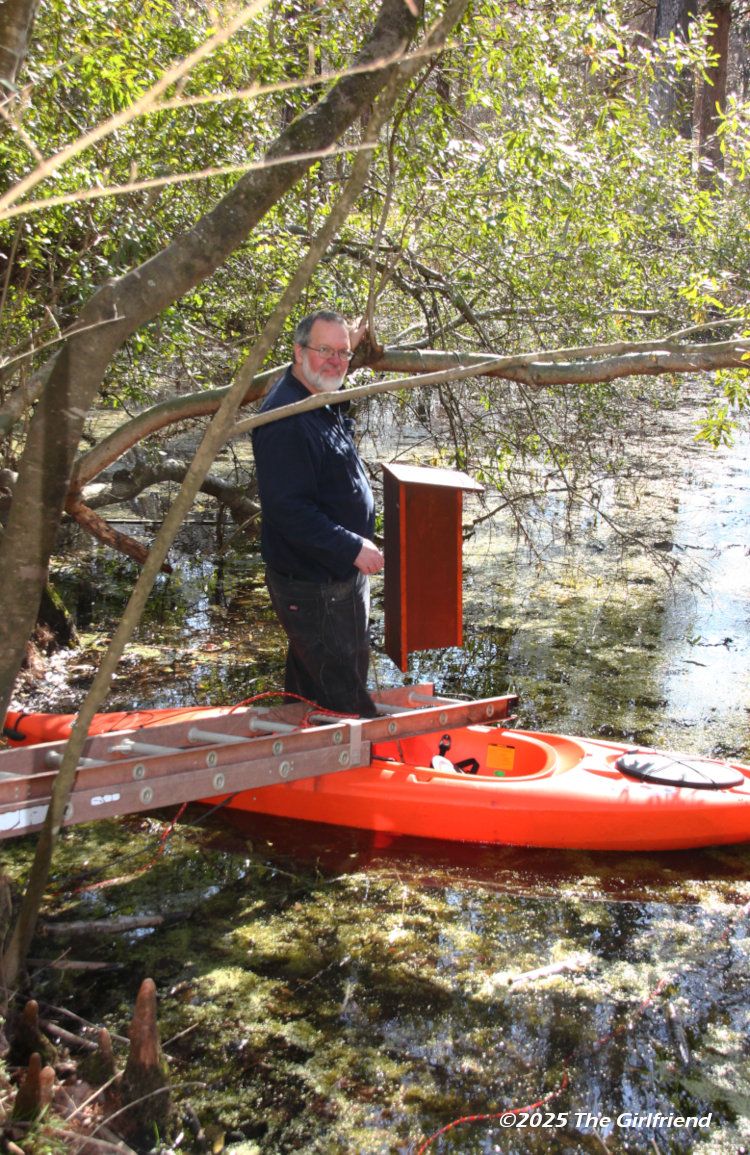
Yes, I’m standing up in a kayak here, but it’s stabilized with the ladder and barely moved at all. And, not only were the ladder and the kayak both linked to shore with ropes, the socket wrench in my pocket was linked to my belt with a cord; nothing was going to get lost in the water.
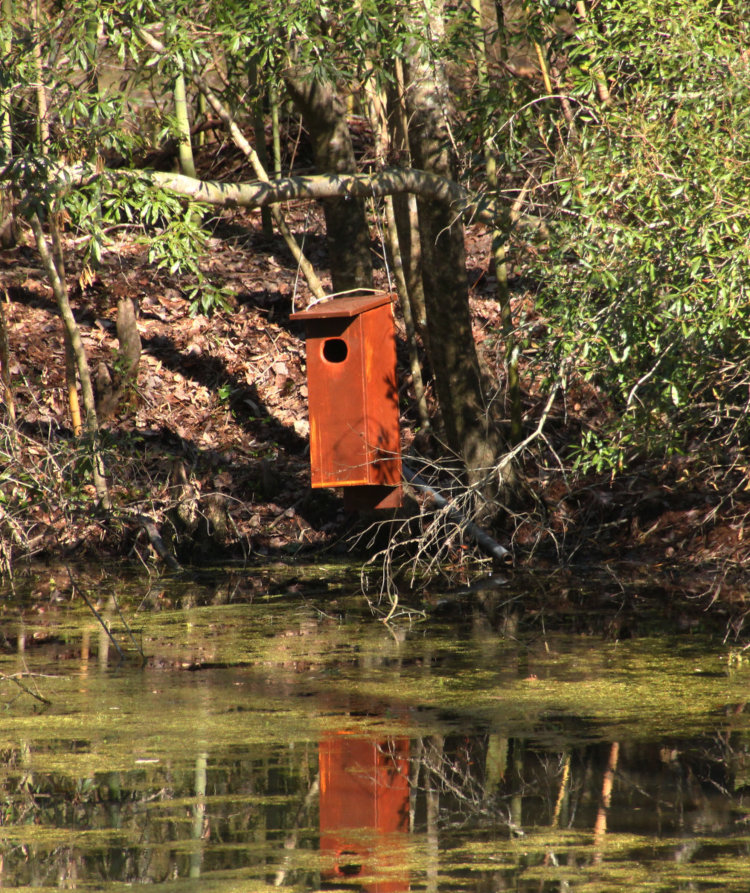
This really couldn’t have waited any longer. The wood ducks are now actively foraging in the backyard, probably because we’re routinely feeding the Canada geese and mallards there, while the mallards have clearly entered breeding season. Not to mention that there’s another major winter storm due in tomorrow night, which is amusing in itself – you can see I was out today without even a jacket, and the anoles were scampering around. Sheesh.
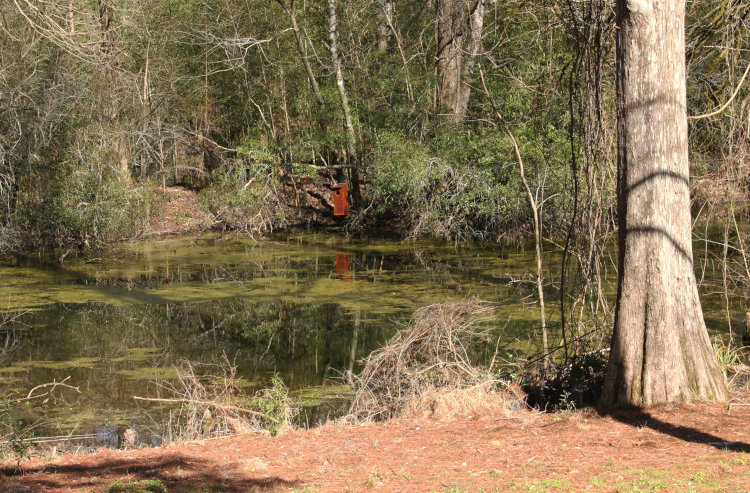
This is the view of the nest box from several windows of the house, including my office, while the view from the deck is slightly obscured by a branch; if you go back to the first photo, you can see Stately Walkabout Manor in the background – from that end of the house to the kayak’s position is about 50 meters. We’ve seen the wood ducks up at this end, so here’s hoping that they take the bait, as it were.
But, there was something else that prompted today’s activities, too.
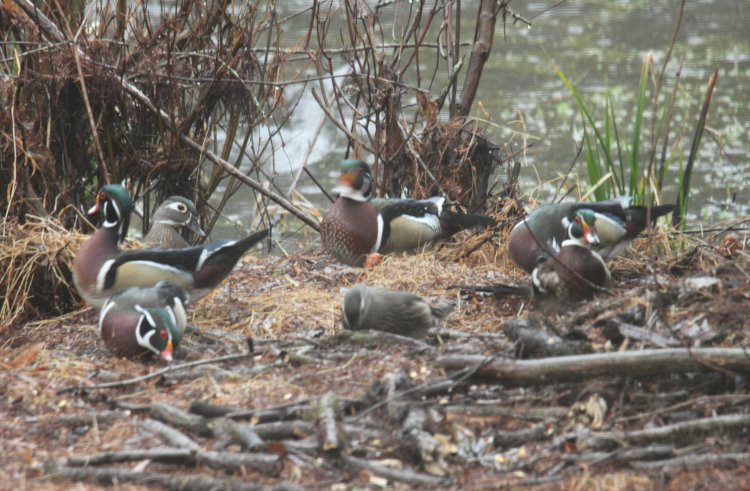
The images are crappy because the morning (two days back) was overcast and I had to shoot through double-pane glass out the back window, but a whole flock of wood ducks (Aix sponsa) had come onto shore right out in the back yard to feed on the corn that we’d distributed; we had to remain indoors because they’re still far too spooky to be around when people are outside. Yet they were quite excited to find the corn.
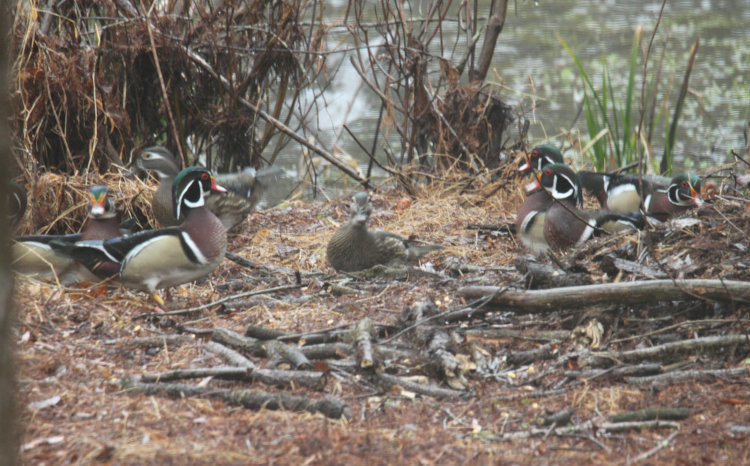
The terrible photographic method was enough to make me find another avenue, which was exploited the following morning, yesterday now:
The view is due east, straight into the morning sun, so not ideal but nothing can be done about it anyway. However, the bathroom window gives a higher perspective and doesn’t spook the ducks, so it works well – all we have to worry about is guests wondering why there’s a tripod in the bathroom.
Speaking of that, I’m still working towards a more viable means of stabilizing the camera for video with a long lens – within the budget of course. Things should improve soon.
